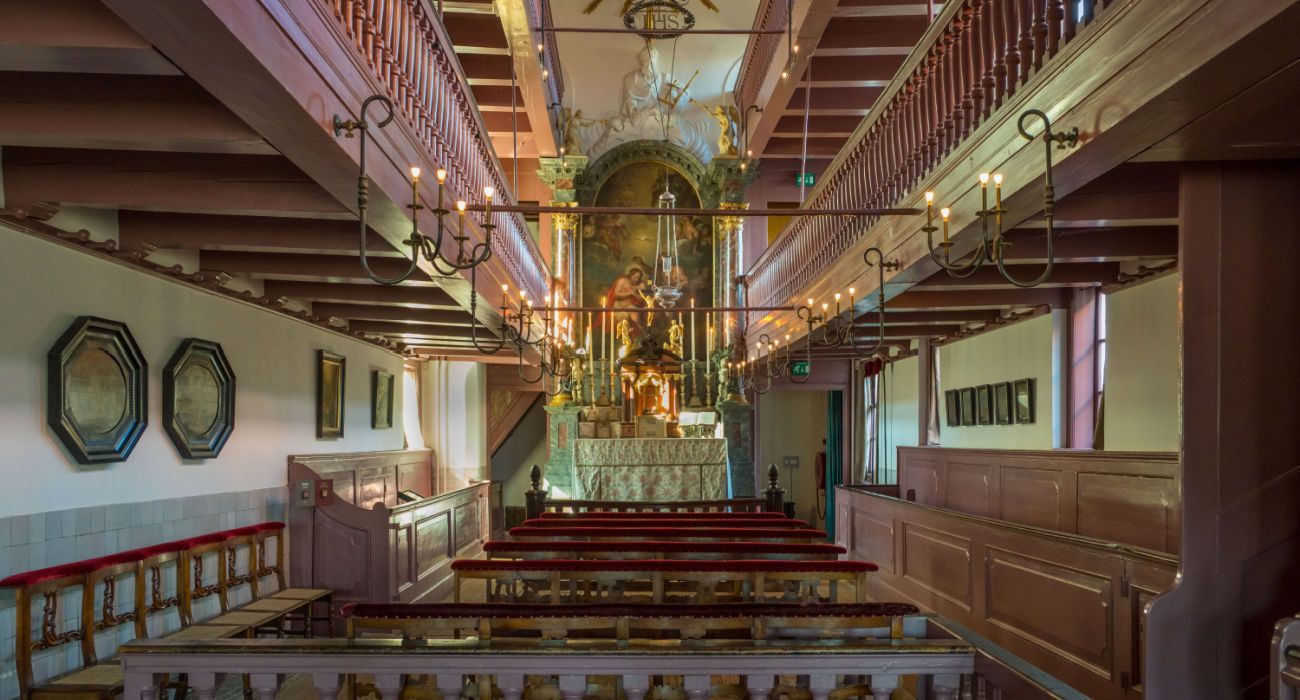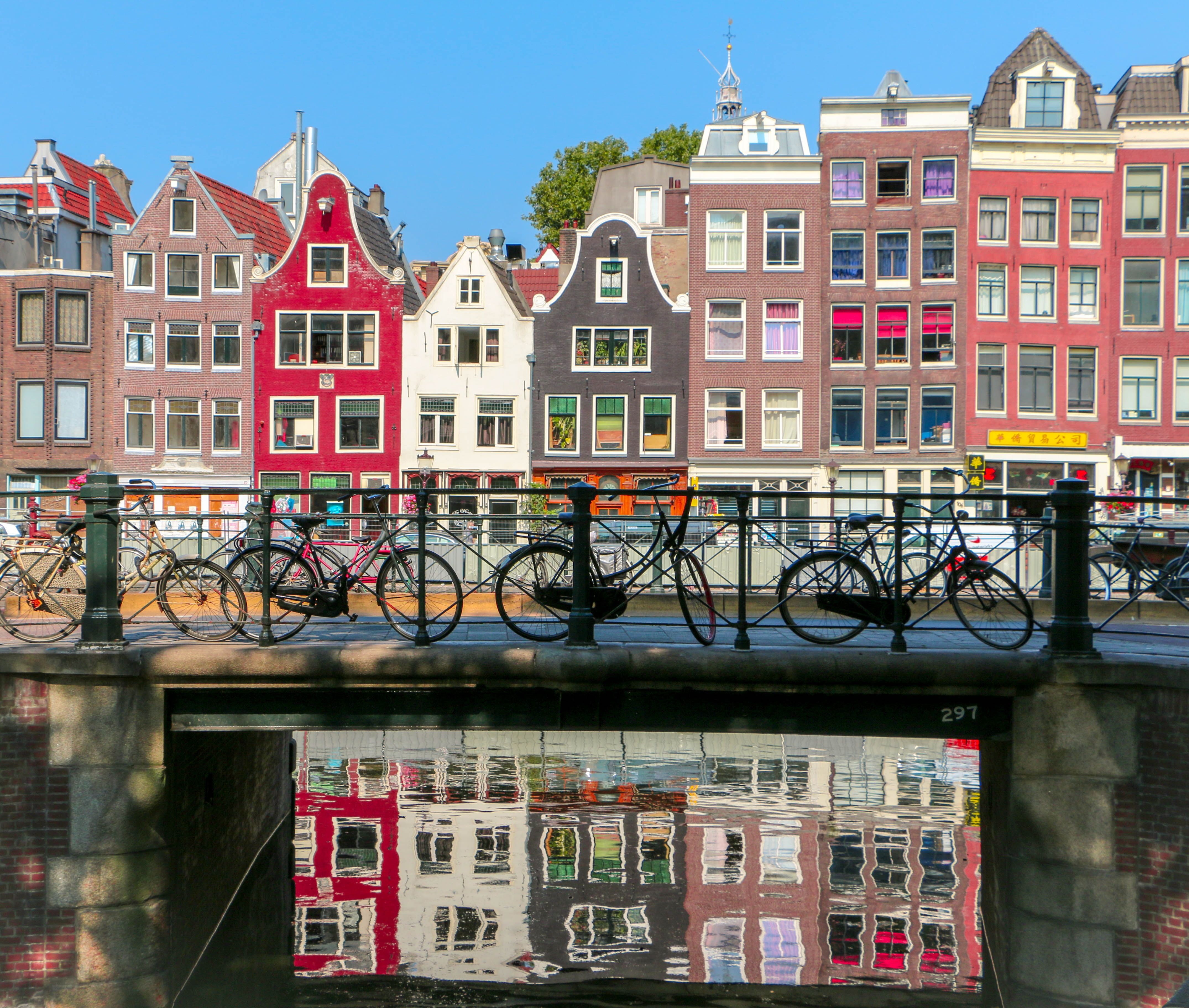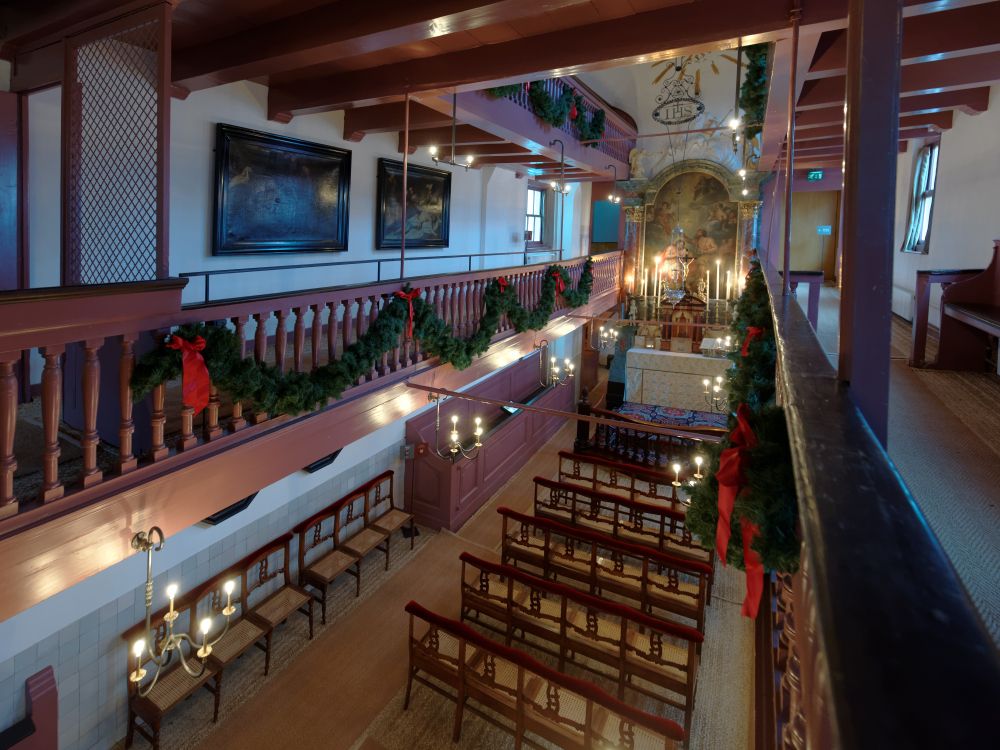Quick Links
One of the more unusual attractions in Amsterdam is the Our Lord in the Attic (not all the attractions of Amsterdam revolve around the Red-Light District). Our Lord in the Attic (called Ons' Lieve Heer op Solder in Dutch) is a 17th-century canal house, house church, and museum right in the heart of Amsterdam. It is a testament that Amsterdam was not always the progressive and open city that it is today.
It is one of the oldest museums. It is located right in the heart of the historic part of Amsterdam and should be on anyone's bucket list of things to see while in Amsterdam (or at least for those in the interest of the history of the city).
Impact Of The Reformation In The Netherlands & Dutch Independence
The Netherlands converted to Protestantism during the Protestant Reformation and then fought a long (80 years long) and extremely bitter war against the Spanish Habsburgs for independence (for a long time the Spanish controlled The Netherlands). It was in the Netherlands that some of the more infamous acts of the Spanish Inquisition were perpetrated.
The Eighty Year's War lasted from 1566 to the recognition of Dutch independence in 1648 at the Peace of Westphalia (which also concluded the devastating Thirty Years War in Germany). After the bitter struggle for independence, the Catholic Church was not particularly welcome in the country.
After independence, it became necessary for Catholics to hide their faith and many worshiped in secret. It is possible to find similar hidden places of Catholic worship in England as Catholicism was suppressed there too.
There are hidden Catholic places of worship in the estates of those linked to the failed Gunpowder Plot and Guy Fawkes.
Building Of The Our Lord In The Attic & Conversion To A Museum
A covert Catholic Church was built on the top three floors of the canal house in the 1660s soon after Dutch independence by the wealthy Catholic merchant Jan Hartman.
The Our Lord in the Attic house is an important example of "schuilkerk" or "clandestine church" that Catholics and other religious dissenters during the 17th century made in an attempt to hide from the Dutch Reformed Church as they were unable to worship in public.
- Built: 1661-1663
- Museum: From 1888
Our Lord in the Attic has been one of the world's older museums as it has been a museum since 1888 and now attracts around 85,000 visitors every year. It is now the second-old museum in Amsterdam (the oldest is the Rijksmuseum Amsterdam).
The canal house is built on the 14th-century Oudezijds Voorburgwal canal in the center of Amsterdam (it was originally a creek that was dug into a canal). The canals of Amsterdam are one of the key features that make the city so charming.
The Netherlands is also home to its own "Dutch Venice" and "City of Canals" called Giethoorn.
The canal house (currently number 40) is old, having been built in 1630 with a house church built inside between 1661 and 1663. It was later renovated in the 18th and 19th centuries.
Over time, Protestant and religious fever died down in the Netherlands and the Roman Catholic Basilica of Saint Nicholas was built in the Old Center district of Amsterdam. Its opening in 1887 rendered the house church redundant and the house church opened as a museum in 1888.
Planning A Visit To The Our Lord In The Attic Museum Today
Visitors can see the front rooms, the between room, the hall, the church, the Lady chapel, the confessional, the Jaap Leeuwenberg hall, and the 17th-century kitchen.
There is a collection of paintings, religious artifacts, and church silver. People not only see the hidden church but also the living quarters, bedsteads, etc. of the period Dutch home.
The museum also offers guided tours for an extra fee. They are available in English, Dutch, German, and French, and they last around an hour. The price of a guide for a group tour is 60 Euros (for up to 12 people in the group). The tours need to be reserved at least a week in advance.
- Admission Fee: €8 ($9) Per Adult
- Guided Tour: €60 ($65) Per Guide
- Tour Duration: 1 Hour
Opening Hours:
- Monday to Saturday: 10.00 am to 5.00 pm
- Sunday & Holidays: 1.00 pm to 5.00 pm
Note that the museum is not wheelchair accessible as there are narrow corridors and stairs (it is a heritage building).
- If one is looking for a cheap place to stay in Amsterdam, consider staying at the humorously self-appointed worst hotel in the world.
- While in Amsterdam, remember the dark days of Amsterdam's past and visit the heart-breaking Anne Frank House.





